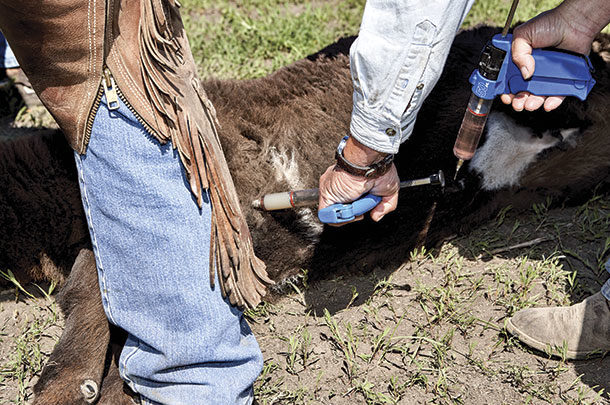However, based on recent actions by federal and state regulatory agencies, policy announcements by food retailers and the conversation at large on the use of antibiotics in animal agriculture, there are consistent themes that provide some insight into what the future of antibiotics in beef production might look like. Starting with …
Stewardship, stewardship, stewardship
According to the Merriam-Webster Dictionary, stewardship is defined as “the careful and responsible management of something entrusted to one’s care.” Beef cattle producers are already familiar with stewardship of valuable resources, such as livestock, land and water. Much the same, antibiotic stewardship involves balancing the benefit of using that antibiotic today while protecting the utility of that resource for future generations. Antibiotic stewardship in the beef industry is going to be more than a buzz phrase because …
The beef industry is going to be using less antibiotics
This probably isn’t even a prediction anymore. So how do we prepare for this in the beef industry? For starters, the determination of “How much less?” has yet to be made, and beef producers must be part of those discussions. One way to use less antibiotics is to not treat sick cattle, but we need to make it absolutely clear that this is not an acceptable means to achieve an arbitrary reduction target.
Aside from not treating sick animals, there are possibilities for reducing the use of antibiotics that are worth considering. Any activity or tool that reduces the overall number of sick animals will reduce the use of antibiotics, and we are seeing a renewed focus on disease prevention as the first step to antibiotic stewardship. Using fewer antibiotics might be achieved by changing a current vaccine or nutrition program, or it might be a future discovery that doesn’t even exist today.
History has repeatedly shown us that developing the next antibiotic is not going to be a “silver bullet” solution to the antibiotic resistance problem. So perhaps reductions in antibiotic use might be achieved by using our current antibiotics differently.
Another path to reducing the need for antibiotics is to develop better tools for disease diagnosis. A fast, affordable test to determine if an animal is likely to benefit from the use of antibiotics and which antibiotic is most useful would certainly refine how and when we deploy antibiotics.
Many of these things are yet-to-come (we are talking about the future) innovations. While some of these tools may completely change the way we use antibiotics, it is unlikely that every tool will be useful in every production system for every disease challenge. Beef producers should have a plan for identifying and evaluating the “antimicrobial alternative” technologies headed their way. As a first step …
Know (and be able to show)where antibiotics are being used in a beef production system
Detailed records of antibiotic use in a particular production system will be an important part of future antibiotic use. On one hand, regulatory agencies and policymakers will need accurate data to inform antibiotic use metrics and legislative decision-making that affects the entire beef industry. Records that verify the antibiotic use associated with a particular production system will be necessary to meet the demands of retailers and beef consumers.
Reliable records of antibiotic use will also be valuable to beef producers in the future. If my first two predictions of “stewardship” and “less antibiotics” are correct, then these records will be very important to meeting those expectations. First of all, records objectively tell us if current treatment protocols are effective or if they need to be re-evaluated.
Good record systems will also allow beef producers to determine if antibiotic use is increasing or decreasing, and why those changes are occurring. These records will help identify the specific disease challenges that require antibiotics and allow beef producers to develop strategies for implementing new technologies that might address them in the future.
While I don’t know exactly what antibiotic use in the future will look like, I am hedging my bet that it will be different. Probably much different. I also have a lot of faith in the ability of beef producers and those that support them. If we steward antibiotics as the precious resource that they are, develop and utilize strategies and tools that reduce the need for antibiotics, and use data systems that provide a realistic picture of when and where we use antibiotics with a commitment to address those uses with “alternatives,” then the next generation will have access to effective antibiotics. And that is a very bright future indeed. ![]()
Getty Images.

-
Brian V. Lubbers
- Associate Professor – Food Animal Therapeutics
- Kansas State University
- Email Brian V. Lubbers








